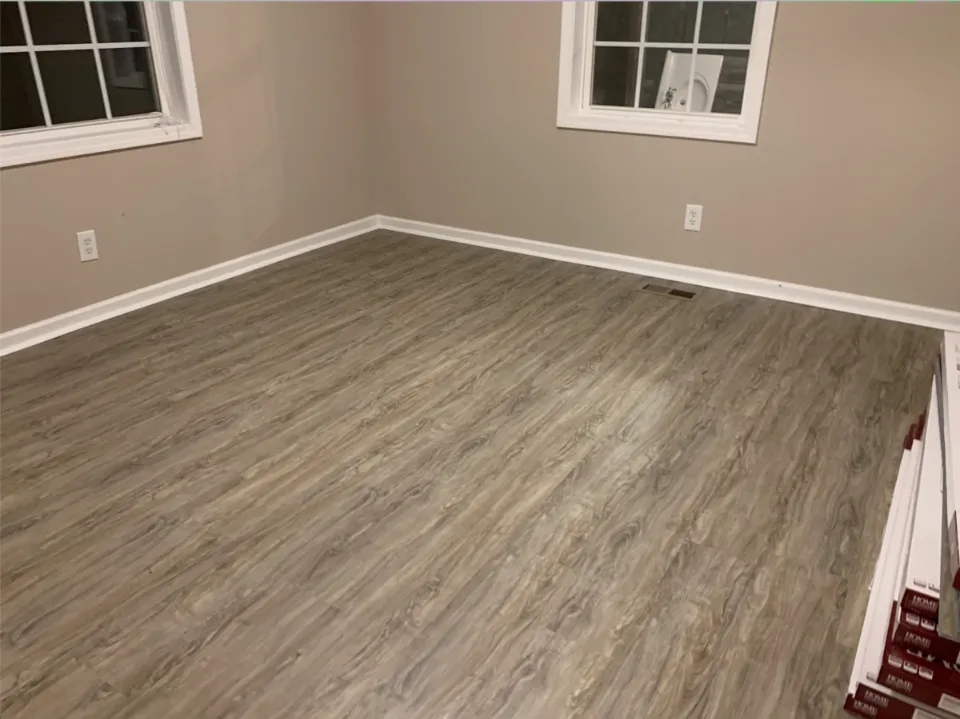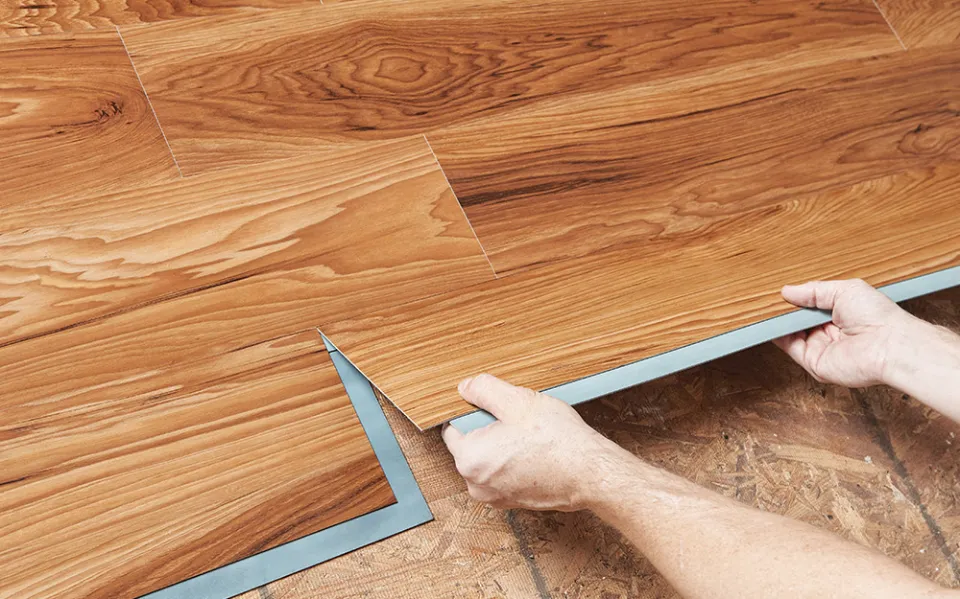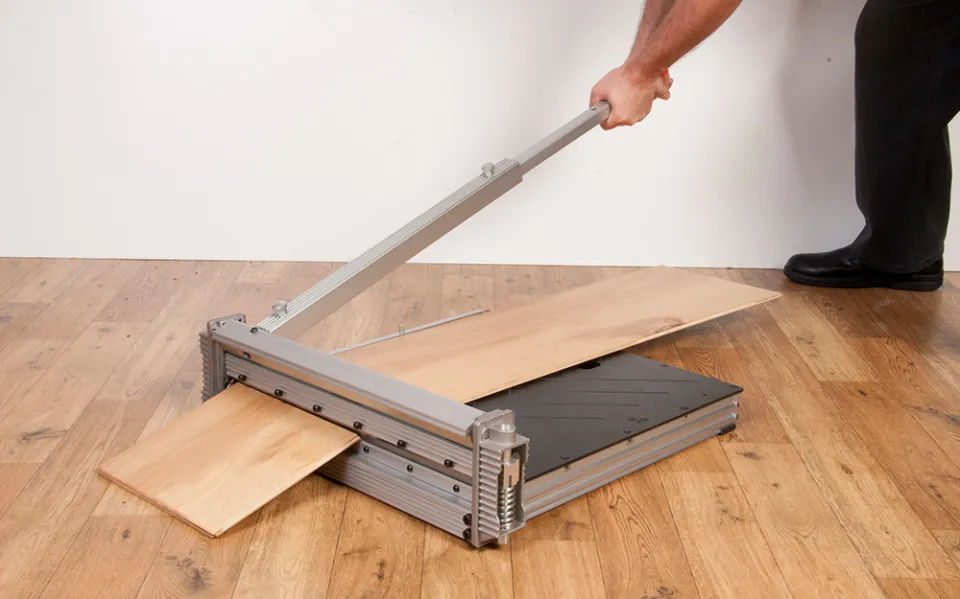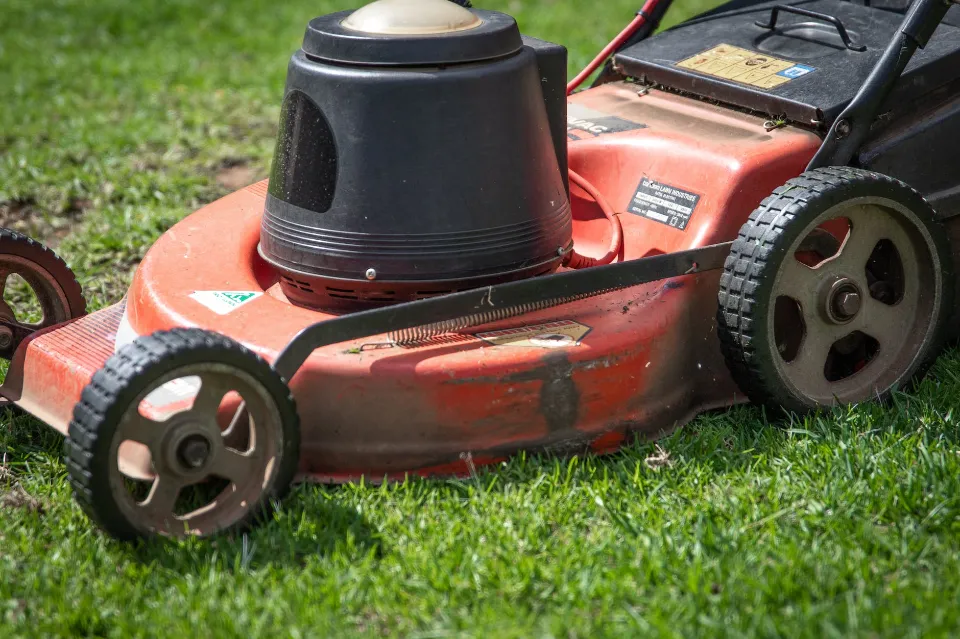The application of vinyl to wood will be covered in this tutorial. Therefore, if you want to create signs using heat transfer vinyl or permanent adhesive vinyl, you’ve come to the right place!
Unfinished wood should hold vinyl reasonably well, but it will stick much better if you sand it and coat it with paint or a clear coat.
Let’s get to it and make our own wood sign with vinyl!
Why Put Vinyl on Wood?

So what exactly is the big deal with vinyl and wood? I believe that many crafters have come to the realization that many of the outdoor signs you see outside the cute little shops on Main Street aren’t actually painted (or haven’t been in a while).
Numerous factors, including those for which crafters have been using vinyl instead of paint, have contributed to the trend toward vinyl that has been observed.
Putting vinyl on wood lets you:
- create an effect just like paint if done right, but without the mess and time
- choose loads of color, style, and font options
- work with a unique look
- get your design perfect in your software where mistakes are cheap
- make the same design over and over, at the same high quality
Therefore, we mere mortal crafters can now achieve the same level of perfection that experts want to achieve with wood signs!
How to Put Vinyl on Wood: Making a Wood Sign
We’ll be using heat transfer vinyl in addition to your typical permanent adhesive vinyl for this tutorial (like an Oracal 651/751).
Yes, two tutorials are available for the cost of one ($0.00).
I’ll be putting vinyl on wood signs for this but if you want to work with a different material (ideally flat) or project, you’ll still be able to follow along and get a lot of help from the guide.
You will understand exactly how to make vinyl adhere to wood by the end of this.
(I also have a tutorial on how to stencil on wood if that’s something you’re interested in learning.)
Materials:
- Wood
- Oracal 651 vinyl (any adhesive vinyl will work) or Siser HTV
- Transfer tape
- Sandpaper (150 grit should work)
- Cutting machine (Cricut/Silhouette)
- Weeding tool
- Squeegee (or any piece of hard plastic/credit card to burnish the vinyl)
- Teflon paper
I much prefer adhesive vinyl for beginner projects because it is simpler and less likely to fail, but if you’ve been hearing a lot about applying heat transfer vinyl to wood, there is a good reason for it.
You can achieve an almost painted effect with HTV. They are both excellent methods for applying vinyl to wood, so I highly recommend giving them both a try. Once you have, you’ll know which to use for each project moving forward.
I have two methods, as I mentioned above. The first few steps are absolutely the same, and then we’ll deviate a bit when it comes to how we’ll stick the vinyl to the wood.
Step 1 – Sand Down the Wood
(If you’re working with adhesive or heat transfer vinyl, this section is the same)
How well you sand the surface really determines how well vinyl will adhere to stained wood. Even if you’re planning on painting it first, you’ll still want to do a thorough job standing it first to let that paint soak into the wood’s pores.
Sand the surface until it feels smooth to the touch using 150 grit sandpaper (slightly finer works just as well, or you can start coarser if your wood is very rough). You’ll want to brush any dust off before applying the vinyl or paint, so get it nice and clean after this.
Step 2 – Treat the Wood
(If you’re working with adhesive or heat transfer vinyl, this section is the same)
It’s important for the wood to not only be smooth but also to have paint applied to it because, as I’ve previously mentioned, vinyl loves to stick to a smooth, flat surface.
You have a few options:
- Polycrylic
- wood stain
- acrylic paint
- chalk paint
If you decide to use acrylic or wood stain, you might want to add an additional coat of Polycrylic on top, but I’ve had success without it. There should be no cause for concern if you’re using chalk paint.
After you paint the wood make sure to wait at least 24 hours to let it dry. You want this wooden sign to be finished already, I know!
However, we are creating something that will last for a very long time (651 is rated for 6 years outside and much longer inside).
If you’re really stubborn (it’s okay if you are!) and working with adhesive vinyl, it’s okay to skip some of this waiting period, but the results will be a lot more varied.
You could temporarily attach a fan to the wood or leave it close to an open window (very sophisticated pie-cooling technology at work here), but I strongly advise waiting the full 24 hours.
Step 3 – Apply the Vinyl
Our approaches will diverge slightly here, so I’ll discuss each one separately. If you haven’t used adhesive vinyl before, I have a tutorial on using the Cricut to cut vinyl.
If you aren’t sure what transfer tape is, or how to use it, I’d definitely check out that above tutorial while you wait for some paint to dry!
Applying Adhesive Permanent Vinyl
First, check to see if you’re using the appropriate adhesive vinyl. I advise using Oracal 651, which is inexpensive and incredibly simple to use, for your first project.
Oracal 751 will perform even better if you plan to make outdoor signs in the future and need them to last as long as possible, or if you’re applying vinyl to wood with a naturally complex or bumpy surface.
You’ll handle wood the same as any other surface. Apply the vinyl, burnish (press down evenly and across the vinyl with your squeegee or credit card), and then pull the transfer paper up!
Go a little more slowly and re-burnish the vinyl if it appears that the lettering is pulling up as you remove the transfer. You might find using a credit card to be difficult, this is where a Cricut scraper can come in handy!
Applying Heat Transfer Vinyl
You should be able to use your heat press, depending on the thickness of the wood (see my full tutorial here). A regular iron will work well if the object is oddly shaped or excessively thick.
- Make sure your design is mirrored
- Your iron (or heat press) should be set to 300 degrees F.
- With your design cut out and weeded, you’ll place it on the wood with liner side facing you
- Cover your design with a silicone sheet (or Cricut Iron-On protective sheet)
- Press for 35 seconds with medium pressure (so press down firmly and evenly over the design)
- Let it cool for a few seconds and then peel off the transfer film
That’s it!

Can You Use HTV on Wood?
Heat transfer vinyl can definitely be used on wood. Not only can you use HTV on wood, but I actually prefer it to adhesive vinyl in many cases. Here’s why:
- Heat Transfer Vinyl has a more matte finish than most permanent adhesive vinyl, which makes it appear more like paint and less like a sticker.
- Adhesive vinyl on wood can occasionally be difficult to work with, as I already mentioned.
- more choices for color and style! Instead of attempting to find a similar color in adhesive vinyl, you can use your favorite glitter HTV for your sign if you already have one.
- HTV is so thin and flexible that it resembles paint on the wood.
How to Make Vinyl Stick Better and Not Fall Off?
A falling Vinyl can be a real pain not only because it wastes time and effort but also because it wastes resources. Your vinyl falling is a sign that something has not been done properly. Here are some ideas to help vinyl adhere to wood more effectively.
- As previously mentioned, vinyl will not adhere to wood with a rough, uneven grain or one that has splinters and cracks, so make sure the wood is thoroughly sanded.
- Coat the wood: Vinyl works best with a smooth surface, which is easier to achieve with painted wood.
- Type of Paint: There is a good chance that the vinyl will come off if you use silicone-containing latex paint. Utilizing home-based paints is safer. Additionally, vinyl won’t adhere to flat paints; use an oil-based enamel in its place.
- Allowing the paint to properly dry is important because newly applied paints release chemicals that interfere with the vinyl’s adhesive.
Other Reasons Why Vinyl May Not Transfer to The Wood
- Use a less sticky transfer tape: If your transfer tape is too sticky, no amount of effort will help the vinyl come off of it. You can continuously spread your transfer tape on the surface of plush materials like denim to lessen its stickiness by reducing the gum’s potency.
- Don’t Cut Too Deep: If you cut too deeply, there is a good chance that the vinyl will also be cut along with the back paper. It will be very challenging to pull off the Vinyl as a result of this. You can adjust the settings of the cutter to ensure that you are not cutting too deep.
Conclusion
A silicone-containing latex paint will most likely not adhere to vinyl. Several users who have tried it out have complained in certain circumstances. Additionally, flat paint won’t allow vinyl to adhere. It is always preferable to use a satin, semi-gloss, or high gloss paint.
Last but not least, Vinyl won’t adhere to Chalk paint because the paint contains substances that will cause the Vinyl to come off. On the other hand, there are solutions to this issue.
As a result, creating lovely crafts and home décor using vinyl on wood is a quick and simple process. Try both Vinyl application techniques, get creative, and then make your own decision regarding which you like best.








